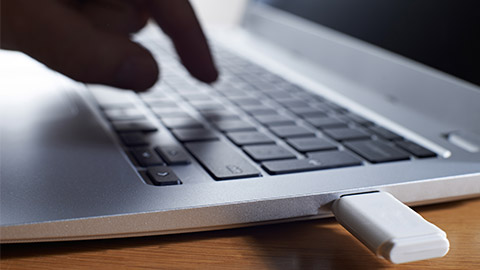Welcome to topic 5 – Finalise and evaluate graphics work. The purpose of this topic is to allow you make informed decisions about the direction of your graphic design outcomes and ensuring that they adhere to industry standards.
You will be introduced to the following topics:
- Edit and refine graphics to meet specific outcomes
- Follow industry protocols in saving, exporting, and storing graphic design files
- Critique graphic design and seek final feedback on final outcomes.

There are many ways to edit and refine your graphic work. Think about the elements and principles of design, and review and evaluate your proposals that way. To improve the design, think about changing the hues, fonts, layout, and other components. Some of the most common design principles are contrast, alignment, balance, hierarchy, repetition, proximity, and white space. You can use these principles to evaluate your concept and to improve its aesthetics, readability, and impact. You can also use design principles to create consistency and harmony among different elements of your concept.
After making the significant changes, polish the specifics. To make sure the design is polished and professional, pay close attention to the little details like space, alignment, and contrast. You can also reflect and refine your concept by reviewing your goals, criteria, and feedback, by comparing your concept to other examples or benchmarks.
Look at what you’ve designed so far and see if it’s responding well to the client brief you were given back in step one. Remember, the goal is to create a visually appealing and effective graphic that communicates your message.

Saving and exporting your design files is an important step in the graphic design process. As you work on your designs, it’s important to save your changes regularly. Once you’re satisfied with your design, you can export it to your device. Finally, you’ll need to choose where you want your design to be saved on your device.
Here's a general guide on how to save and export design files in common graphic design software. Click on the headings to explore more.
- To save your work in Photoshop, go to File > Save As or press Ctrl + S (Cmd + S on Mac).
- Choose the file format (e.g., PSD for native Photoshop format, JPEG, PNG, etc.).
- Adjust settings such as quality, resolution, and color mode if necessary.
- Click "Save" to save your file.
To export for web use, go to File > Export > Save for Web (Legacy) and choose the desired file format (e.g., JPEG, PNG, GIF).
- To save your work in Illustrator, go to File > Save As or press Ctrl + S (Cmd + S on Mac).
- Choose the file format (e.g., AI for native Illustrator format, PDF, EPS, SVG, etc.).
- Adjust settings such as compatibility options, compression, and font embedding if necessary.
- Click "Save" to save your file.
To export for web use or sharing, you can use the Export for Screens option (File > Export > Export for Screens) to export multiple artboards or assets in various formats simultaneously.
- To save your work in InDesign, go to File > Save or press Ctrl + S (Cmd + S on Mac).
- Choose the file format (e.g., INDD for native InDesign format, PDF, IDML, etc.).
- Adjust settings such as PDF presets, compression, and compatibility options if necessary.
- Click "Save" to save your file.
To export for print or digital use, go to File > Export and choose the desired format and settings (e.g., PDF for print, Interactive PDF for digital).
- To save your work in Sketch, simply go to File > Save or press Cmd + S.
- Sketch files are saved in the native, sketch format.
To export assets or artboards, select the desired elements, then go to File > Export or press Cmd + Shift + E. Choose the desired format (e.g., PNG, JPG, SVG, etc.) and export settings.
Consider the intended use of your design files when choosing the file format and settings for saving and exporting. Additionally, it's good practice to keep multiple versions of your work saved in different formats for flexibility and compatibility.

Design critiques are key to any successful design process. Creating in a bubble will ensure a design fulfils what you want, but obtaining solid feedback and addressing it will ensure that it meets the needs of others. It is important to assess the technical and aesthetic effectiveness of graphics work, throughout the process, but particularly at the end of a client brief, as it validates the design choices and direction of the thoughts behind the final concept. Critiquing graphics from a technical and aesthetic perspective is the aim of the process. It is an essential step to ensure the quality and effectiveness of the design.
Important
- From a technical perspective, the graphic must meet the technical requirements in the design brief, including file format, colour profile, resolution, and file size. The graphic must be consistent across all mediums, including print and digital, and compatible with different devices and software.
- From an aesthetic perspective, the graphic must meet the design objectives and effectively communicate the intended message. The graphic should be visually appealing, well-balanced, and legible. It should also be aligned with the brand guidelines and consistent with other visual elements in the project.
To critique a graphic, having a checklist of criteria to assess it against is helpful. This could include factors such as.
- Technical requirements (resolution, file format, colour profile, etc.)
- Consistency across different mediums (print, digital, etc.)
- Visual appeal and balance
- Legibility and clarity of message
- Alignment with brand guidelines
- Consistency with other visual elements in the project.
By assessing the graphic against these criteria, designers can identify areas that require improvement and make necessary changes to achieve the desired outcome. You must get the most out of a design critique. You need to be positive and remember that critiquing is a collaborative process that benefits both the reviewer and the designer.
Watch this video
It is about graphic designers reading bad feedback from clients. (2:41)
